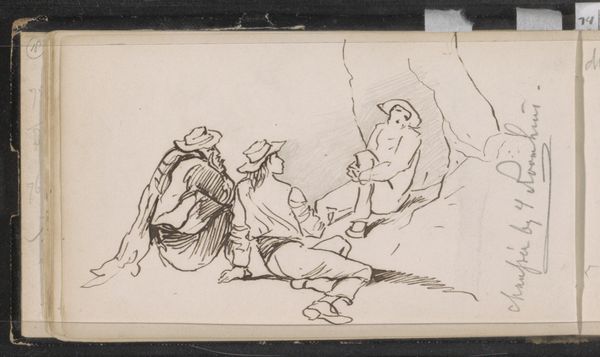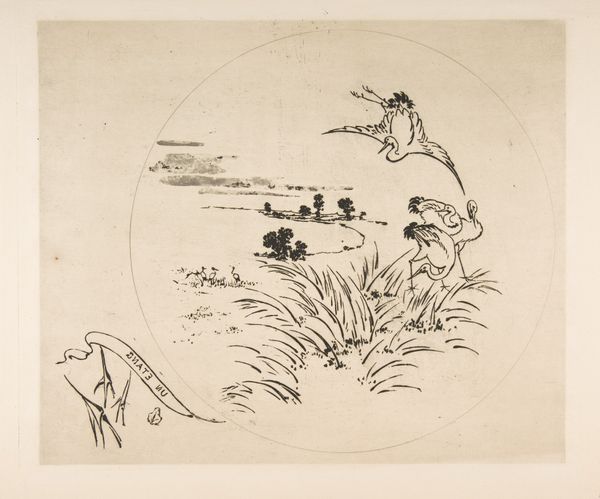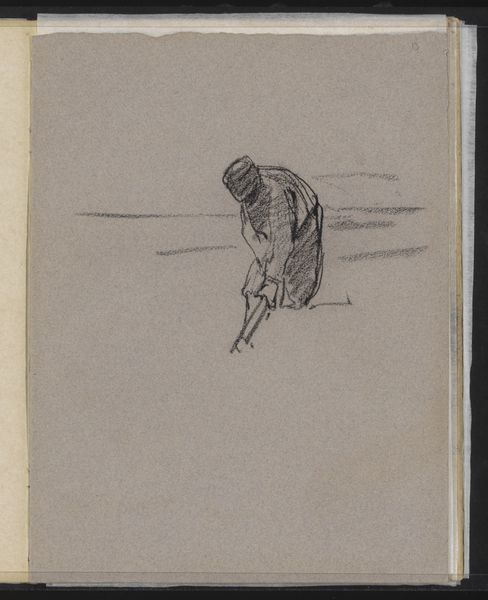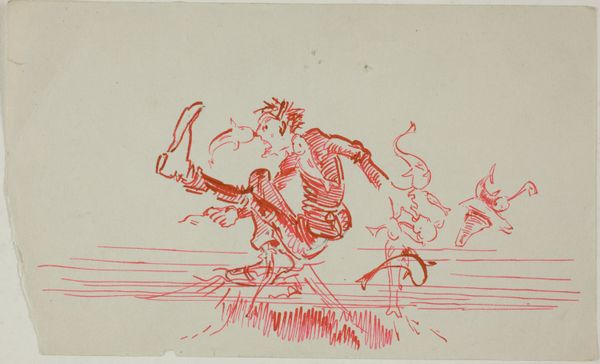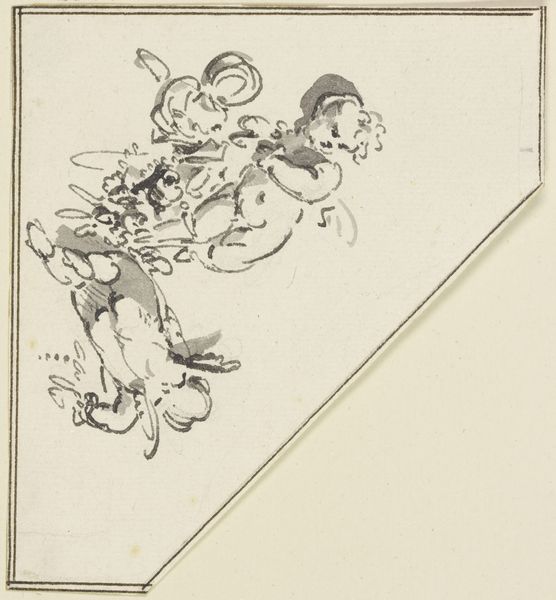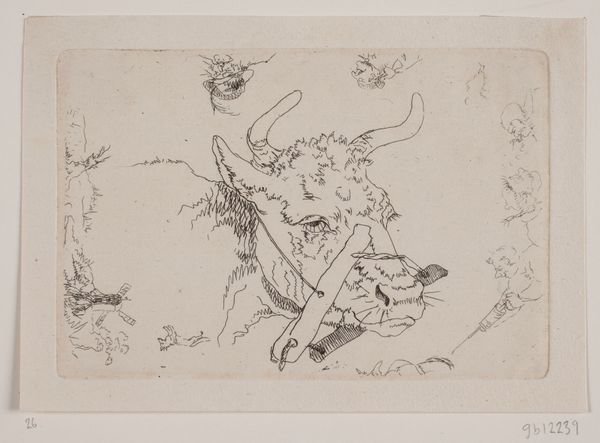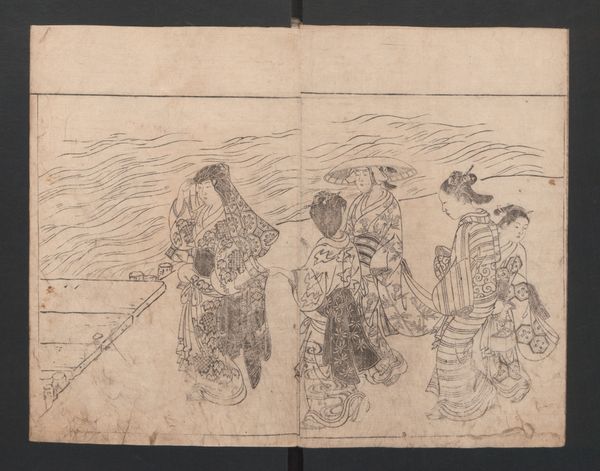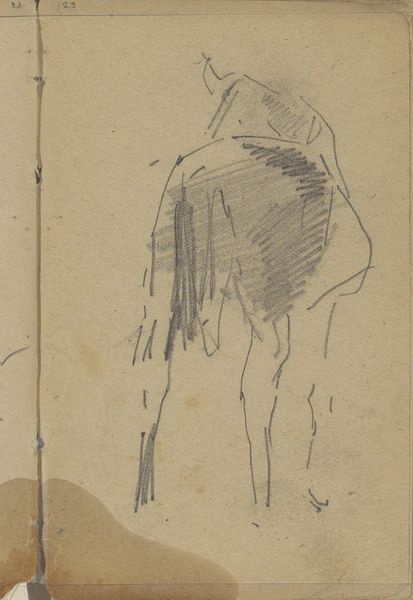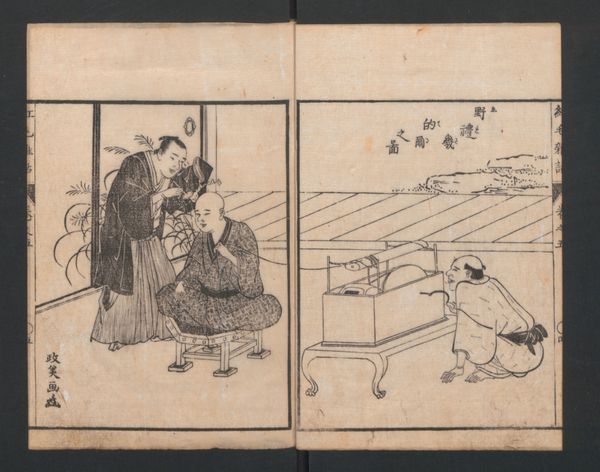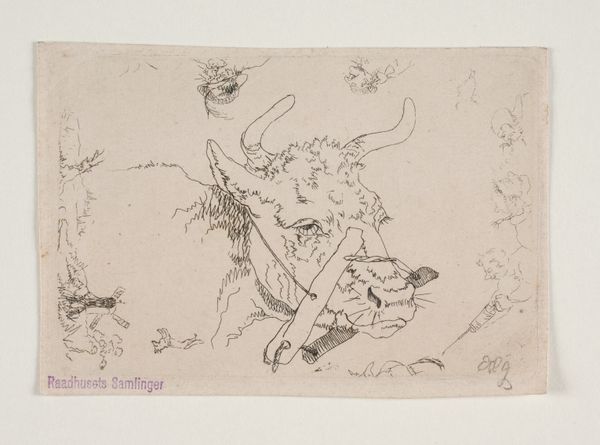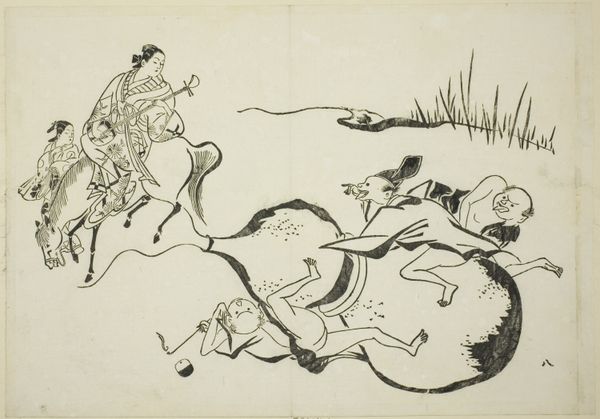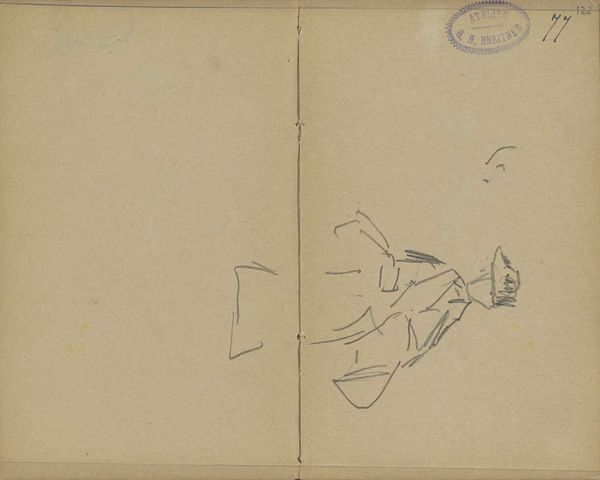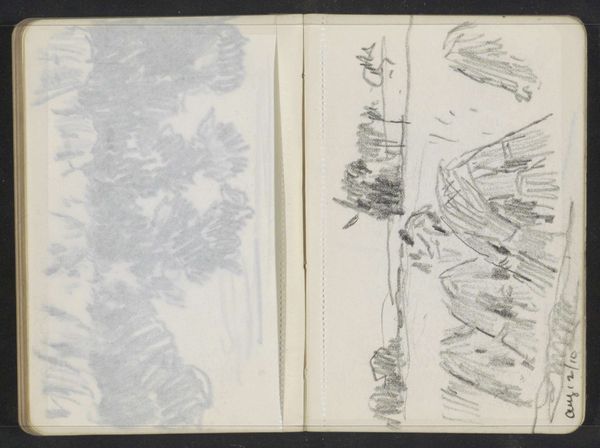
drawing, print, paper, ink
#
drawing
#
narrative-art
# print
#
book
#
asian-art
#
landscape
#
ukiyo-e
#
figuration
#
paper
#
ink
Dimensions: 10 3/8 × 7 1/2 in. (26.3 × 19 cm)
Copyright: Public Domain
Curator: So, we're looking at "A Garden of Pictures by Kyoto Artists," dating back to 1814. This intriguing artwork resides here at the Metropolitan Museum of Art. It’s an ink drawing printed on paper. Visually, what stands out to you initially? Editor: The figure, undoubtedly! The posture communicates intense effort and his laughter hints at triumph; a fisherman, perhaps? Pulling in an enormous catch. It suggests a complex narrative steeped in societal and cultural observations. Curator: It is Shiba Kōkan's work; and your reading hits at its symbolism. Remember that for the Edo period artist such as Kōkan, artistic innovation went hand in hand with the depiction of cultural symbolism and memory through form and material, bridging Japan to other cultures in turn. Editor: That cultural connection feels crucial to understanding the weight of his imagery! In terms of intersectional discourse, this resonates strongly with me. He seems intent on critiquing how identities form and shift under political tensions across geography and the flow of cultural exchange between Asia and Europe during that period. What are your thoughts on that push-pull effect? Curator: Certainly, and you perceive the depth well! I feel it comes from a personal interest in a period of transformation—the figure isn’t simply to be observed as a fisherman. Shiba’s own journey through art practices is imbued here—oil painting alongside the more traditional woodblock, navigating Japanese and European influences and expectations, creating new cultural memories! Editor: Exactly! Art-making isn't produced in a vacuum, but through the tension of exchange, translation, and even strategic resistance. In some ways, art and symbolism can often give voice to identity struggles from societal challenges rooted in inequality and oppression. Kōkan does that here, doesn’t he? Curator: It’s there within the layers! In terms of closure, it's clear that Shiba's fusion of artistic backgrounds and methodologies has created work filled with encoded metaphors. Editor: And the fact it lives here today reveals those enduring connections between then and now. Its legacy, one of a truly blended intercultural moment, continues to teach.
Comments
No comments
Be the first to comment and join the conversation on the ultimate creative platform.
